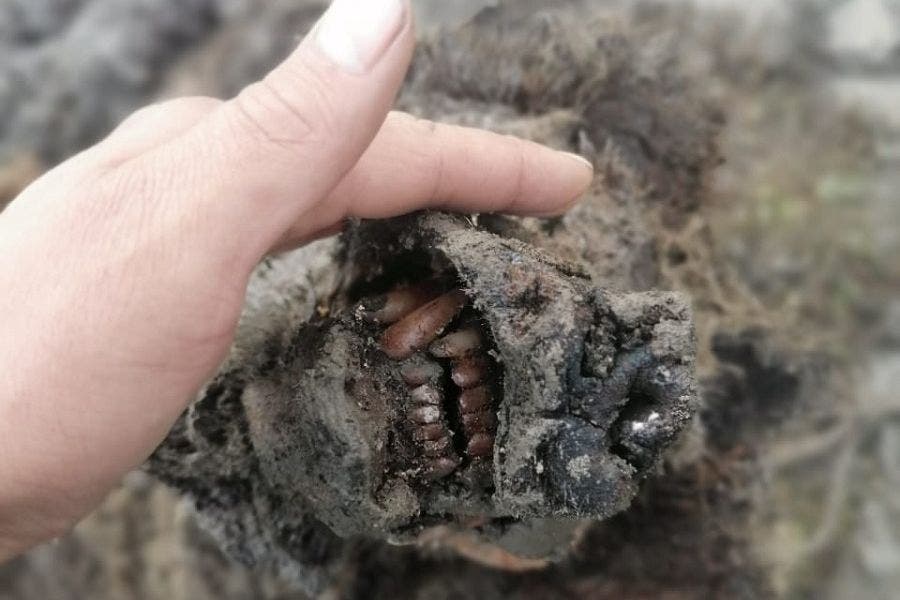The remains of a perfectly preserved Ice Age cave bear were just discovered in the Russian Arctic, with its nose, teeth, and internal organs still intact. The finding was made by a group of reindeer herders on the Lyakhovsky Islands, which are part of the New Siberian Islands archipelago in the Arctic.

The bear’s remains were revealed by the melting permafrost. It is believed to have died 22,000 to 39,500 years ago. The species, Ursus spelaeus, lived in Eurasia during the last ice age and then went extinct 15,000 years ago. Previously, scientists only had been able to discover partial skeletons of cave bears, which makes the new findings groundbreaking.
Scientists of the North-Eastern Federal University in Yakutsk, the leading center for research into woolly mammoths and other prehistoric species, highlighted the importance of the discovery. They were initially alerted by local reindeer herders but haven’t been able to travel to the site yet, as it’s a long way from Yakutsk.
“Today this is the first and only find of its kind — a whole bear carcass with soft tissues. It is completely preserved, with all internal organs in place including even its nose. Previously, only skulls and bones were found. This find is of great importance for the whole world,” scientist Lena Grigorieva from the North-Eastern Federal University said in a statement.
Cave bears roamed Europe and Asia when the continents were covered in glaciers. They shared the landscape with other impressive creatures such as mammoths, saber toothed cats and giant ground sloths. They could weigh up to 2,200 pounds (one tonne), which is 500 pounds (225 kg) heavier than the largest bears currently alive.
Greigorieva and her colleagues said the bear’s age was only an estimate until carbon dating could add precision. They will carry out studies to know more about the carcass, including a genetic analysis. The reindeer herders have transferred the right to research to the scientists of NEFU, according to Greigorieva.
As climate change kicks in across the world, the Siberian permafrost, which remains frozen all year, is beginning to melt. As this happens, more and more ice-age creatures are unearthed after lying frozen for tens of thousands of years. The Lyakhovsky Islands, where the bear was found, is also packed with mammoths from the last ice age.
Last year, a group of scientists discovered a 40,000-year-old severed wolf’s head, complete with fur, teeth, brain, and facial tissue on the banks of a river in Yakutia. Other ancient creatures found in the Yakutia ice include two extinct cave-lion cubs and a 42,000-year-old foal. More are expected to be found as the temperature rises.






